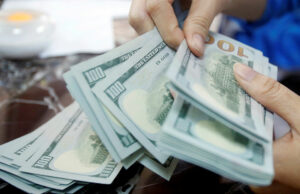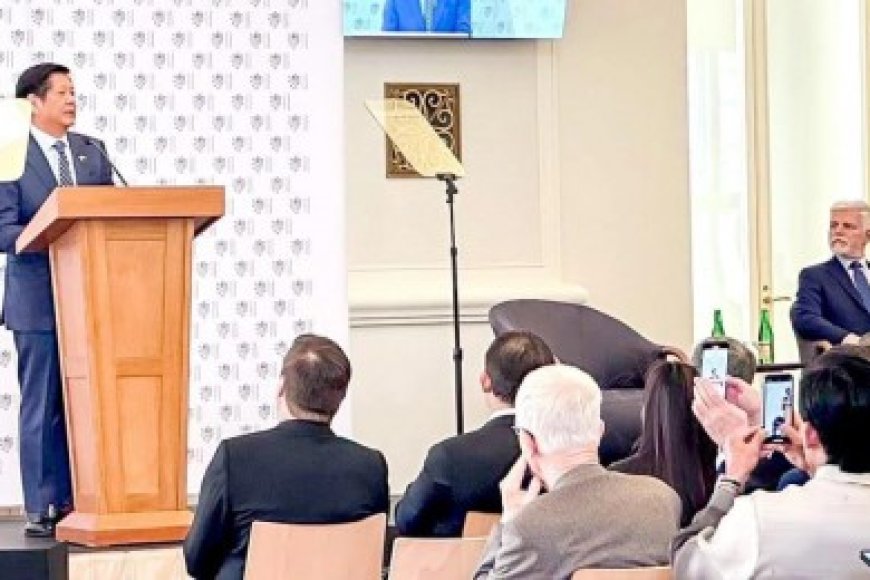Dollar reserves hit record $112 billion
THE PHILIPPINES’ gross international reserves (GIR) rose to a record high at end-September, the Bangko Sentral ng Pilipinas (BSP) said on Monday.

By Luisa Maria Jacinta C. Jocson, Reporter
THE PHILIPPINES’ gross international reserves (GIR) rose to a record high at end-September, the Bangko Sentral ng Pilipinas (BSP) said on Monday.
Central bank data showed dollar reserves increased by 3.8% to $112 billion at the end of September from $107.9 billion at the end of August.
“The month-on-month increase in the GIR level reflected mainly the National Government’s (NG) net foreign currency deposits with the BSP, which include proceeds from the NG issuance of Republic of the Philippines global bonds,” the BSP said in a statement.
In August, the NG raised $2.5 billion from its sale of triple-tranche US dollar-denominated global bonds. This was the government’s second global bond offering this year.
Year on year, gross international reserves jumped by 14.2% from $98.1 billion.
BSP data showed the level of dollar reserves was enough to cover about 6.3 times the country’s short-term external debt based on original maturity and 4.4 times based on residual maturity.
It was also equivalent to 8.1 months’ worth of imports of goods and payments of services and primary income.
Ample foreign exchange buffers protect an economy from market volatility and ensure that a country can pay its debts in the event of an economic downturn.
VALUATION OF GOLD RESERVES RISE
The central bank also attributed the rise in dollar reserves to “upward valuation adjustments in the BSP’s gold holdings due to the increase in the price of gold in the international market, and net income from the BSP’s investments abroad.”
The central bank’s foreign investments went up by 2.4% to $94.5 billion as of September from $92.3 billion in the previous month. Year on year, foreign investments climbed by 13.9% from $83 billion.
Reserves in the form of gold were valued at $10.9 billion as of end-September, up by 6.9% from $10.2 billion as of end-August. It was also higher by 11.2% from $9.8 billion a year ago.
The BSP earlier defended its sale of gold holdings in the first half, saying that it took advantage of favorable prices as part of its active management strategy.
The sale of gold had “generated additional income without compromising the primary objectives for holding gold, which are insurance and safety,” it added.
Data from the central bank showed foreign currency deposits soared by 157% to $2.03 billion in September from $789.5 million a month earlier. It likewise surged from $834.4 million in the previous year.
Net international reserves increased to $112 billion at end-September from $107.8 billion at end-August, the BSP said.
Net international reserves are the difference between the BSP’s reserve assets or GIR and reserve liabilities, such as short-term foreign debt and credit and loans from the International Monetary Fund (IMF).
The country’s reserve position in the IMF inched up by 0.7% to $731.1 million as of September from $725.9 million in the prior month but declined by 6% from $778.1 million a year ago.
Special drawing rights — the amount the country can tap from the IMF — was unchanged at $3.85 billion for the second straight month.
“It’s very possible the BSP proactively built up its GIR. If not for some healthy FX (foreign exchange) market intervention, the peso would have overshot (strengthened) too quickly,” Bank of the Philippine Islands (BPI) Lead Economist Emilio S. Neri, Jr. said in a Viber message.
Rizal Commercial Banking Corp. Chief Economist Michael L. Ricafort said international reserves increased due to proceeds from the NG’s dollar bond issuance, as well as continued growth in remittances, foreign tourism receipts, and foreign direct investments.
“The country’s strong external position would also support the country’s favorable credit ratings of one to three notches above the minimum investment grade,” he added.
John Paolo R. Rivera, a senior research fellow at the Philippine Institute for Development Studies, likewise said this was mainly due to the surge in remittances.
“It’s that time of the year again when remittances surge as the holiday season enters, the enrollment period comes in. Also, returns and dividends to foreign investments are being collected,” he said via Viber message.
“The sale of gold may have also contributed when the BSP did asset reclassification from gold to US dollars. In short, there have been inflows recently,” he added.
In the January-July period, cash remittances went up by 2.9% year on year to $19.332 billion.
Mr. Neri noted that the start of the US Federal Reserve’s easing cycle also supported the GIR.
“The space to build import cover and debt coverage usually opens up whenever the Federal Reserve pivots to policy easing,” he said.
The US central bank reduced its benchmark policy rate by 50 basis points (bps) to the 4.75%-5% range in September, its first rate cut in four years.
“The import cover is more than double the international standard of 3-4 months that would continue to provide buffer support for the peso exchange rate,” Mr. Ricafort added.
Mr. Neri said the current $112-billion GIR level is just around $20 billion less than the country’s external debt.
Outstanding external debt hit a record $130.182 billion at the end of June, separate data from the BSP showed.
“With more US rate cuts expected, the BSP can accumulate further as long as it doesn’t cut the reverse repurchase rate much more aggressively than the Fed,” Mr. Neri added.
BSP chief Eli M. Remolona, Jr. has said the Monetary Board can possibly deliver 25-bp rate cuts at its remaining two meetings this year on Oct. 16 and Dec. 19.
The BSP expects the country’s GIR to hit $106 billion by end-2024.























